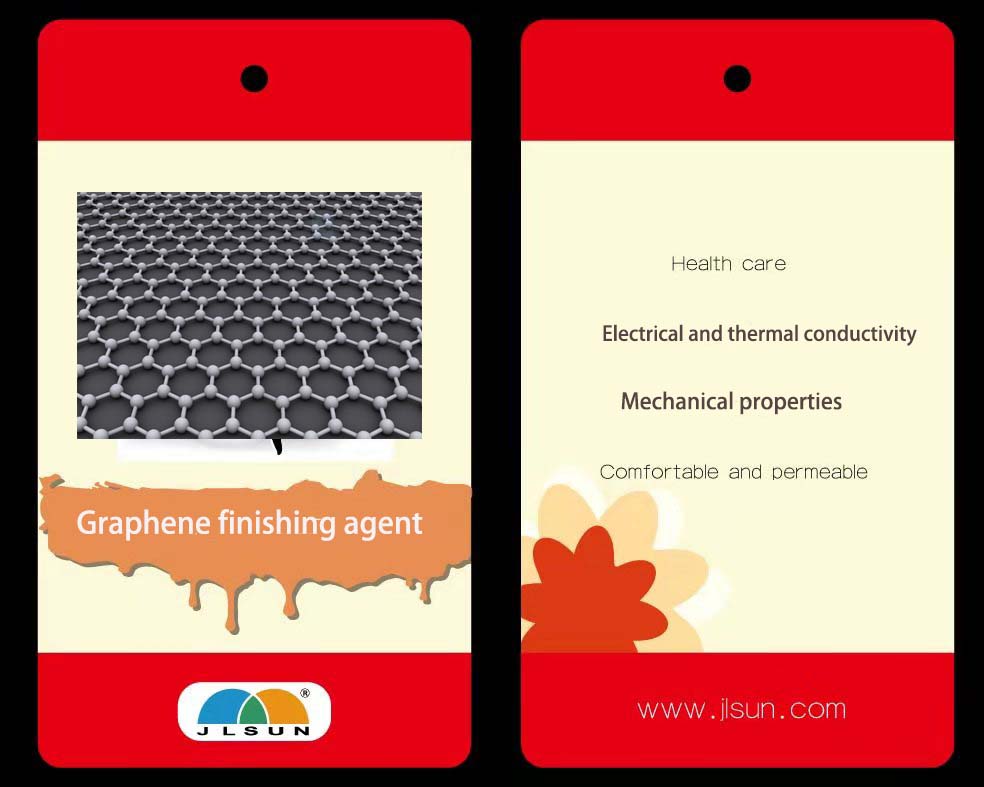
Since Andre Heim and Konstantin Novoselov of the University of Manchester in the United Kingdom in 2004 successfully produced single-layer graphene using graphite as a raw material and using the micromechanical exfoliation method, it has excellent electrical, optical, Graphene materials with thermal and mechanical properties have gradually become the focus of attention of researchers in many disciplines.
Graphene has the characteristics of ideal mechanical properties, thermal conductivity, barrier properties and ideal electron mobility; graphene oxide is the oxide of graphene, with active groups and water solubility, so its reactivity is stronger. Application under special conditions is more convenient than graphene; both rely on their outstanding characteristics to have broad prospects in textile fields such as graphene fibers and graphene functional finishing. The excellent properties of graphene functional textiles are mainly reflected in the aspects of anti-bacterial, anti-mite, anti-static, anti-ultraviolet, heat conduction, and far-infrared health care. Fibers and fabrics treated with graphene finishing agents can be widely used in sportswear, outerwear, underwear, bedding and health care products.
Introduction to scientific and technological materials Graphene functional textile materials have the following characteristics:
1. Low temperature far infrared high emissivity
Graphene finishing functional fiber fabrics have good far-infrared biological functions and strong low-temperature far-infrared effects, and the far-infrared emissivity at a wavelength of 5-14μm is over 88%.
Graphene finishing functional fabrics also have a good far-infrared heat preservation function: the warmth preservation effect of traditional clothing is achieved by preventing the body's heat from dissipating outwards, such as cotton wool, down, etc., while graphene far-infrared fabrics also It can absorb external energy (such as solar energy, the energy emitted by the human body) and store it, and then feedback to the human body, so that the human body has a warm feeling and raises the human body temperature.
2. Conductive and antistatic function
Graphene has excellent electrical conductivity. After finishing graphene on the surface of the fabric, a conductive layer can be formed on the surface of the fabric to play an antistatic or conductive role. Experts concerned coated the prepared nano-graphene on cotton fabric with a wet coating method. The graphene is evenly distributed on the surface of the cotton fabric and interacts with the cotton fiber through hydrogen bonds, and its thermal stability and mechanical properties are also significantly improved. The tensile stress and Young's modulus are increased by 58.9% and 64.1% respectively, and its electrical conductivity is very strong. Some experts have successfully prepared large-size and functional graphene-based silk fabrics using environmentally friendly dry coatings; coated high-concentration graphene oxide sol directly on the silk fabric and then reduced it with ascorbic acid to deposit the reduced graphene oxide uniformly on the The surface of the fabric gives the fabric excellent flame retardancy and high conductivity at the same time.
3. Anti-bacterial and anti-mite function
Graphene has strong cytotoxicity to cells, and it can directly contact the cell membrane of bacteria and cause it to decompose. Krishnamoorthy et al. used graphene oxide nanostructures to coat the surface of cotton fabrics for finishing and tested them. The results showed that the modified fabrics have higher thermal stability and greater resistance to gram-positive bacteria. toxicity. Experts such as Fan Chunhai used three methods: adsorption, radiation cross-linking and chemical cross-linking to apply graphene oxide to cotton fabrics. Tests have shown that these fabrics have strong antibacterial properties and can kill 98% of bacteria. , And good washing resistance. Some experts also introduced that fabrics treated with graphene finishing agents have excellent anti-mite effects, which can effectively prevent the breeding of mites and keep the fabric clean and hygienic.
4. Anti-ultraviolet function
There are two ways to resist ultraviolet rays: absorb ultraviolet rays or reflect ultraviolet rays. Graphene can absorb a certain amount of ultraviolet light and can be used as an ultraviolet absorber in textile finishing. Hu Xili and others used graphene nanosheets as ultraviolet absorbers and water-soluble polyurethane as adhesives to coat cotton fabrics and found that the UPF value of cotton fabrics after treatment reached 356.74, which is 10 times that of untreated fabrics. Tian Mingwei et al. treated cotton fibers with a composite of graphene oxide and chitosan through electrostatic self-assembly. The treated cotton fabric has excellent washing resistance and its UPF value is as high as 452.
5. Heat conduction function
Graphene has ideal thermal conductivity, and the thermal conduction process is mainly caused by its lattice vibration. Combining graphene with electronic applications can play a very good role in keeping warm. Abbas et al. combined graphene, carbon nanotubes, and fine boron nitride particles to apply resin to cotton fabrics. Graphene-finished fabrics have good thermal conductivity. Compared with pure cotton fabrics, their thermal conductivity is increased by more than 8 times. Gunasekera et al. repeatedly dipped and dried the cotton fabric until the graphene oxide dispersion was completely absorbed, and then reduced the graphene oxide on the cotton fabric to prepare a graphene-coated fabric. The finished fabric was compared with the unfinished fabric. Thermal conductivity has increased by 55%.
Product features of graphene finishing agent JB-2019
Main ingredients
Nano graphene dispersion
pH value 6.5-7.5
Solid content 20%
Viscosity 3000-8000mPas
Suitable for various fiber fabrics such as cotton and polyester
Instructions for use
Graphene finishing agent JB-2019 is suitable for the printing, coating and finishing processes of fabrics such as pure cotton, chemical fiber or polyester-cotton fabrics.
Process example
Printing process: It can be printed by silk screen, flat screen or rotary screen printing, then dried, and then stretched.
Process formula: appropriate amount of graphene finishing agent JB-2019 (stir well before use)
Process conditions:
Fabric → printing → drying → baking (180-190℃×30-40 seconds, or 150-160×1-2 minutes) → finished product
Precautions:
1). The color of this product is black, which will affect the shade of textiles. Please confirm the sample before use.
2). Graphene has various properties. Our company has not done systematic and detailed experiments on other properties. Customers are required to do sufficient experiments and testing before making goods.
